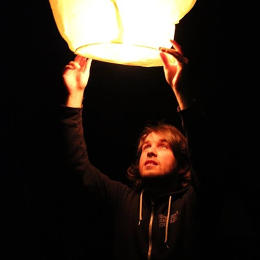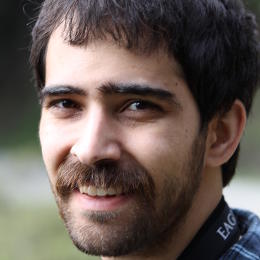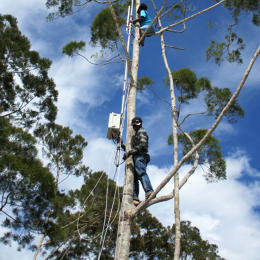Plugging The Telco Gap
That’s why Endaga runs on dedicated 2G frequencies. But the company hasn’t secured spectrum licenses for any of its CCN1 village networks.”As a research group and an individual, I’m not a cross-the-T’s and dot-the-I’s kind of person,” says Endaga CEO Kurtis Heimerl. “In these areas we ducked under the bureaucracy. We just didn’t do the friction. if you really want to be innovative, you’re going to have to push on these regulations. Our network is demonstration of that.” Endaga isn’t high on anybody’s crackdown list yet. In Indonesia where Endaga has deployed its CCN1, like most other parts of the world, the telcos are busy adding 3G and 4G coverage in urban areas. When those companies do decide to venture into rural and remote areas, Endaga is hoping to partner—and they’ve had some introductory talks toward that end. The company has even developed a proprietary tech to detect frequency conflict from a newly arrived telco and switch to an unoccupied one in 90 seconds—without dropping a call. For now, though, the CCN1 cheaply solves a problem the telcos are ignoring. And Endaga stays out of trouble since it’s only selling a box while locals run the service. “We are protected in a structural sense because we don’t run the thing, the villagers do—but we aren’t worried of people coming in and taking down the network,” Heimerl says. “Nobody wants to shut us down. We’re bringing coverage into areas where they don’t have an answer.” Endaga leaves pricing in the hands of the town hustlers, who charge enough to ensure that the network is self-sufficient. Which sounds like an environment ripe for abuse—but these hustlers are members of small towns or villages. Everybody knows them.

“When you bring a new technology, who gets the benefit? By the very nature of any intervention, the powerful are the first to benefit,” says Heimerl. “As abusive as it can be, at least the bar is lower than in [a city] where that person would be removed from that experience. Our experience is that this is better. It’s a thing I worry about, but you make the progress that you can.” Their current setup is about equivalent to 2.5G, permitting voice, SMS, and GPRS data. They’ll get to 4G eventually, Hasan says, but just providing voice and SMS is a great step forward. “The key thing that we believe strongly is that the first few bits of connectivity are far more important than the next hundred megabits,” Hasan says. “Looking back to first deployment in Indonesia, the villagers traveled a two-day trip to nearest town with cell coverage. If there was an emergency, you wouldn’t hear about it for a month.” Which can quite literally mean life and death. There’s one doctor who serves the Papua village Endaga deployed their CCN1 network into, a village in the highlands they refer to as “Desa” (Bahasia Indonesia for “village”) to protect its identity while their network remains unlicensed. Desa is a four-hour drive from the nearest large town, Wamena, but the doctor lives on the other side of the island in the Papua capital of Jayapura—a 30-minute flight from Wamena that Google Maps can’t even plot by car. Before the cell network, the resident nurse would’ve been on her own when the doctor left. But with Endaga’s cell network, the doctor is just a phone call away. “One time, a person came in with respiratory disease, and they texted the doctor and he told them what to do. He told them to give the patient the right drugs and he was fine,” Hasan says. “It’s literal life and death.”

The solution was to bundle network usage into credits for purchase which can be re-sold out across the village. But they also discovered that it’s inefficient for the hustler running the network to personally sell prepaid credit bundles to hundreds of villagers. Instead, Endaga designated a few dedicated agents who bought prepaid credit bundles from the network source at wholesale prices, which the agents turned around to re-sell with their own markup. After the Endaga team left the Indonesian village, they noticed something strange. Tiny credit transactions of, say, 500 rupiah that were far below the 10,000 rupiah minimum credit bundle price began to appear. The villagers were trading credits for services—they’d created their own transaction infrastructure. The agents realized they could make their own credit distribution network—which inspired other shopkeepers to open a credit distribution service and try to undercut the agents.

Hasan insists that Endaga isn’t planning to venture into mobile money. But in a way, currency is exactly what the credits became. “To be clear, we’re not doing anything with mobile money. You buy credits on your account and that gets used for paying for minutes or calls or whatever. It’s hard to really know what a credit transfer system gets used for without talking to people,” Hasan says. Whether or not the system will work as well in other countries remains to be seen. There are partnership discussions in progress with villages in Afghanistan and the Philippines, but “those relationships move slowly and take time,” Hasan says. “The big exciting thing is decentralizing control of communications infrastructure,” Hasan says. That includes empowering locals to harness and analyze data themselves. And then there are the apps—yes, apps—that people can build to work on the CCN1 network. “We built a really fun application called Village Idol, which had a call-in number to sing a song and record it. People could call in and listen and vote, then we’d distribute credits to winner,” Hasan says. “So in academia we build products which are really suited to local networks, like job boards. We build networks that are community owned, more accessible, and more hackable than existing telco networks.”
(163)
